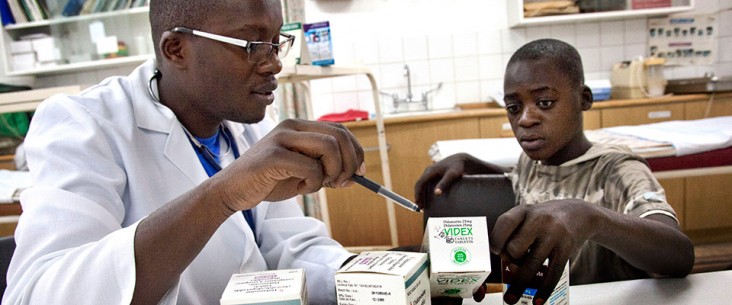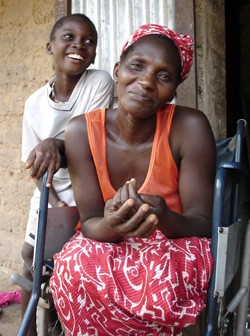- What We Do
- Agriculture and Food Security
- Democracy, Human Rights and Governance
- Economic Growth and Trade
- Education
- Ending Extreme Poverty
- Environment and Global Climate Change
- Gender Equality and Women's Empowerment
- Global Health
- Water and Sanitation
- Working in Crises and Conflict
- U.S. Global Development Lab

Delivering Lifesaving HIV Treatment to Those Who Need It Most
HIV continues to be one of the deadliest infectious diseases in the world. At the end of 2011, 34 million people were living with HIV, with approximately 69 percent of them living in sub-Saharan Africa. Worldwide, an estimated 2.5 million people became newly infected with HIV in 2011. Without treatment, HIV infection progresses to AIDS in approximately 8 years; once diagnosed with AIDS, median life expectancy is under 2 years.
Antiretroviral therapy (ART) stops the replication of the HIV virus inside a person infected with HIV, affording the body’s immune system time to recover and rebuild itself. While not curative, these medicines are dramatically powerful, with studies suggesting that HIV-positive patients in resource- limited settings can achieve near-normal life expectancies when taking ART. In addition, by lowering the amount of HIV virus in the body, antiretroviral drugs (ARVs) help reduce the chance that an HIV-positive individual transmits the infection to an HIV-negative partner.
USAID's Response: Robust Antiretroviral Therapy Programs to Improve Health, Reduce Transmission and Build Stronger Health Systems
In spite of the severity of the challenges posed by the epidemic, access to antiretroviral therapy globally has increased substantially since 2003 to over 8 million people, with over 5 million people supported directly by U.S. Government assistance under the U.S. President’s Emergency Plan for AIDS Relief (PEPFAR). The number of AIDS-related deaths in sub-Saharan Africa declined by nearly one-third between 2005 and 2011. The U.S. Government is the world’s largest donor to HIV and AIDS programs worldwide, having provided over $36 billion through PEPFAR through FY 2012, with much of that support managed by the U.S. Agency for International Development (USAID). As PEPFAR’s largest implementing agency, USAID supports comprehensive ART programs to improve access to quality HIV care and treatment services – including antiretroviral medicines – for individuals living with HIV.
USAID-supported ART programs focus on three key priorities:

- Improving Access to ART for individuals living with HIV
- Improving the Quality of ART services
- Fostering Sustainability of lifelong HIV treatment services
To accomplish these priorities, USAID and its implementing partners have utilized a variety of innovative programmatic approaches. They include:
- Pooling procurement and utilizing generic antiretroviral medicines to lower the price of HIV medicines in resource-limited settings 10-fold.
- Using new technologies such as mobile phones to help support patient adherence to medication and engagement with health services.
- Making care more accessible through mobile outreach and patient support.
- Task sharing among groups of health care workers to ensure patients can receive the services they need.
- Developing robust information systems for clinical settings and for the management of commodities; using these systems to improve the quality of care provided to patients.
Future Directions
In order to meet the substantial need for ART, USAID is actively working on projects to increase the efficiency of treatment programs while simultaneously improving program quality.

- The USAID Supply Chain Management Systems (SCMS) project is harnessing the power of pooled forecasting and procurement beyond ARVs to include critical diagnostic laboratory supplies. In addition, the project continues to work closely with host country logistics systems to improve their capacity to forecast, procure, store and distribute key commodities. In close collaboration with other U.S. Government partners, the SCMS project operates an Emergency Commodities Fund to mitigate potential stock-outs of ARVs and rapid HIV test kits.
- USAID is supporting implementation science and operations research through studies looking at linking patients to care and treatment, retention and integration of ART services.
- Through mechanisms like the Health Finance and Governance Project, USAID is providing support for cost-modeling to help inform governments, country teams and implementing partners in planning for future commitments and maximizing the impact of available resources. This includes planning for changes in national guidelines in 2013 and in the adoption and spread of new technologies for improving care, such as HIV viral load testing.
For more information on HIV treatment programs, please see the Treatment Issue Brief [PDF, 197KB].







Comment
Make a general inquiry or suggest an improvement.